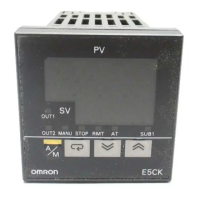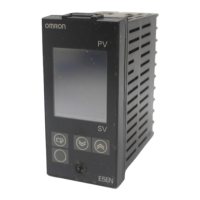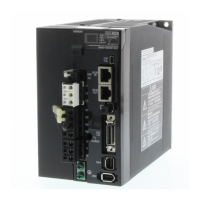Receiving
1
1.2 Features and Advantages of Control Methods
SIEPYEUOQ2A01A AC Drive Q2A Technical Manual 25
• Motor loss increases during overexcitation braking and high-slip braking. Use a maximum braking frequency of 5% ED and a
maximum braking time of 90 seconds. After you start high-slip braking, you cannot restart the motor until it stops. Use
overexcitation braking to decelerate over a shorter time at a pre-determined speed.
• Acceleration and deceleration have priority over torque limits in Open Loop Vector Control during acceleration and deceleration
(soft start changes). The drive will not operate until the speed is at the minimum frequency or the reverse direction of motor
rotation when the motor speed decreases because of torque limits during constant speed control. Set L7-07 = 2 [TrqLimit@Acc/
Decel= [I-ctrl@Ac/Dec] to enable torque limits during acceleration/deceleration (for winding applications).
*3 Do not use this function with hoist application.
Table 1.6 OLV/PM, AOLV/PM, CLV/PM and EZOLV Features and Advantages of Control Methods
Control Method
Selection
PM Open Loop Vector
Control
(OLV/PM)
PM Advanced Open
Loop Vector Control
(AOLV/PM)
PM Closed Loop Vector
Control
(CLV/PM)
EZ Open Loop Vector
Control
(EZOLV)
Notes
Controlled
Motor
PM Motor
Induction Motors/PM
Motors/SynRM
(Synchronous
Reluctance Motors)
-
Parameter Settings A1-02 = 5 A1-02 = 6 A1-02 = 7 A1-02 = 8 -
Basic Control
PM Open Loop Vector
Control (no speed
controller)
PM Open Loop Current
Vector Control (with speed
controller)
PM Closed Loop Current
Vector Control (with speed
controller)
Open Loop Current Vector
Control
-
Main Applications
• General-purpose variable
speed control for PM
motors
• Applications in which a
high level of
responsiveness and
accurate speed control
are not necessary.
• General-purpose variable
speed control for IPM
motors
• Applications in which
high-precision speed
control and torque limits
are necessary.
Very high-performance PM
motor control with motor
encoders
Example: Torque control
and torque limits
Low-speed torque
applications
Example: Fans and pumps
-
PG Option Card Not necessary Not necessary Necessary (PG-X3) Not necessary -
Maximum Output
Frequency
590 Hz 400 Hz 400 Hz 120 Hz -
Speed Control
Range
1:20 AM
1:20 AM
1:100
*1 *2 *3
1:1500 1:100
This is the range of variable
control.
When you connect and operate
motors in this mode, think about
the increase in motor temperature.
Starting Torque 100% / 5% speed
100% / 5% speed
200% / 0 min
-1
*1
200% / 0 min
-1
*4
100% / 1% speed
This is the motor torque that the
drive can supply at low speed
during start-up and the related
output frequency (rotation speed).
You must think about drive
capacity when a large quantity of
torque is necessary at low speed.
Auto-Tuning
*5
Stationary, Stator
Resistance, Rotational
Stationary, Stator
Resistance, Rotational
Stationary, Stator
Resistance, Z-phase,
Rotational
Line-to-Line Resistance
Automatically tunes electrical
motor parameters.
Torque Limits
*5
No Yes Yes Yes
Controls maximum motor torque to
prevent damage to machines and
loads.
Torque Control
*5
No Yes
*6
Yes No
Directly controls motor torque to
control tension and other
parameters.
Droop Control
*5
No No Yes No
Sets load torque slip for motors.
Distributes motor loads.
Zero Servo
Control
*5
No No Yes No
Locks servos without an external
position controller to prevent
movement caused by external
force.
Speed Search
*5
Yes Yes Yes
Yes (Although NOT
operation in the reverse
direction of the Run
command)
Immediately estimates (or detects)
motor speed and direction when
coasting to a stop to quickly start-
up the drive without stopping the
motor.
Automatic Energy-
saving Control
*5
No Yes (IPM motors only) Yes (IPM motors only) Yes
Automatically adjusts the voltage
applied to motors to maximize
motor efficiency for all load sizes.
High Slip Braking
(HSB)
No (induction motor-
specific function)
No (induction motor-
specific function)
No (induction motor-
specific function)
No
Increases motor loss to let the
motor decelerate faster than usual
without a braking resistor. Motor
characteristics have an effect on
this function.
Feed Forward
Control
*5
No Yes Yes No
Compensates effects of the system
inertia to increase the speed
precision when the load changes.

